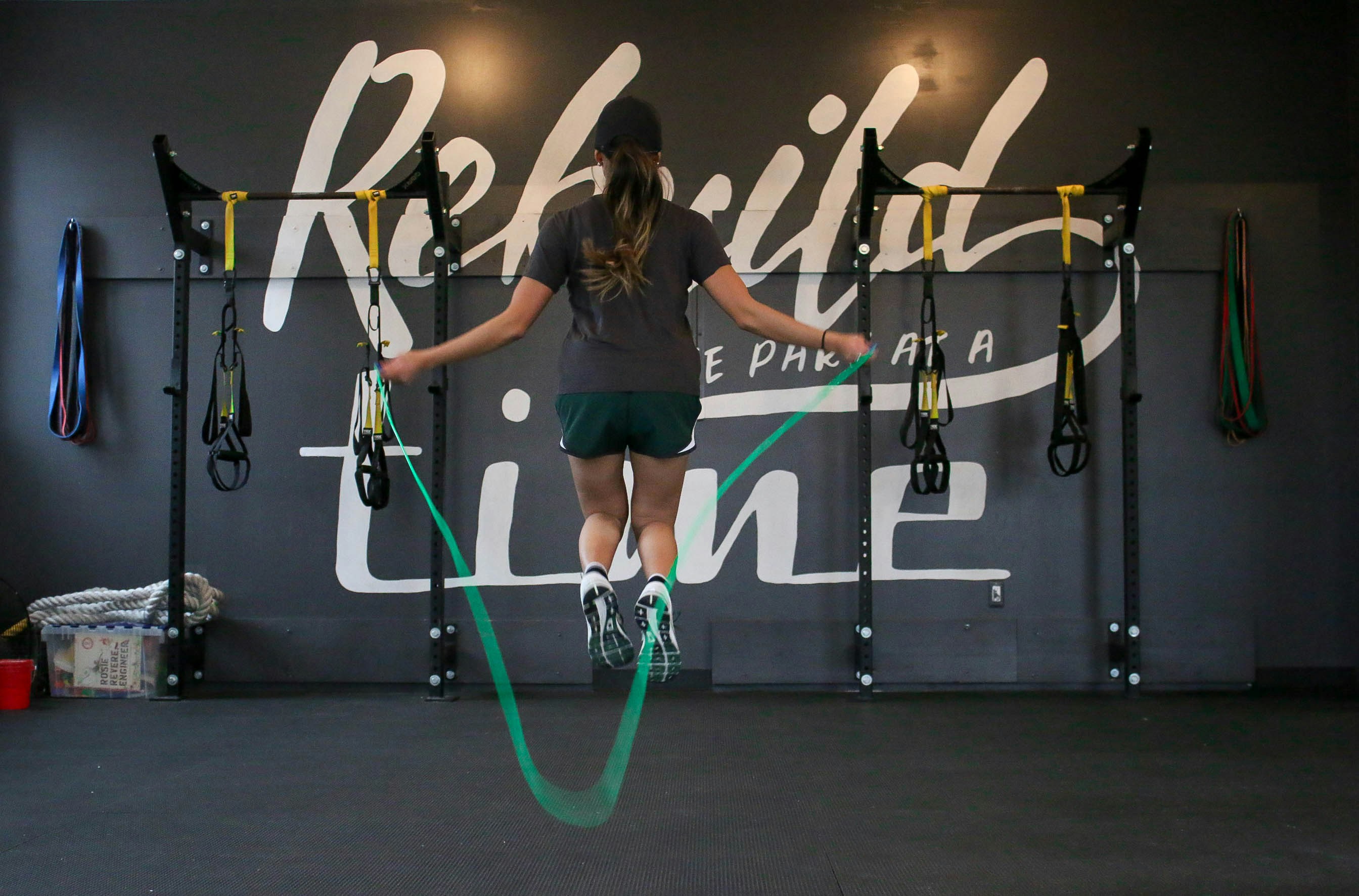
Photo by Markus Spiske
Jump roping, also known simply as skipping, is an accessible and versatile exercise that people of all fitness levels can enjoy. This activity involves swinging a rope under your feet and over your head as you jump, allowing for a rhythmic and aerobic workout that can be performed almost anywhere. Jump roping has gained recognition for its exceptional benefits and convenience, appealing to those seeking a fun and efficient way to improve their physical health.
Considered among the most effective forms of cardio exercise, jump roping can significantly enhance cardiovascular health. Studies have demonstrated that just a short session of jump roping can burn more calories and increase heart rate more efficiently than many other forms of exercise. Specifically, it can burn over 1,000 calories per hour, with around 0.1 calories consumed per jump, making it a powerhouse for those looking to manage weight or improve endurance.
Moreover, it’s not just the heart and calories that benefit; jumping rope also contributes to better bone density, coordination, balance, and overall muscle engagement. This low-cost, high-efficiency workout not only strengthens the lower body but also the upper body due to the involvement of the arms and shoulders in continuous motion.
For additional insights on enhancing your cardio workouts, you might find our article on Zone 2 cardio interesting, where we explore steady and sustainable intensities for improving endurance and fat burning.
In essence, whether you’re a beginner looking for an easy start into fitness or a seasoned athlete aiming to keep your routine exciting, jump roping offers a compelling blend of fun, challenge, and health benefits.
Cardiovascular Benefits of Jump Roping
Jump roping offers significant benefits for heart health, making it more than just a fun childhood activity. As an aerobic exercise, jump roping increases your heart rate, which can lead to improved heart health and a reduced risk of cardiovascular disease. According to the Cleveland Clinic, integrating jump roping into your routine can boost your heart rate substantially, providing a form of high-intensity cardiovascular exercise. This type of exercise helps your body use fuel stored in the muscles, thus supporting heart efficiency and endurance (Cleveland Clinic, 2024).
Regular jump roping sessions can be especially effective. Exercise physiologist Katie Lawton notes that even varying your pace can alter the intensity and benefits of the exercise. On average, a person can burn about 100 calories in just 10 minutes of jump roping. Such an intense workout not only strengthens the heart but also contributes to overall calorie burn, which is helpful for weight management.
For those seeking practical tips on including cardiovascular exercises into their daily routine, our article on steady-state cardio examples might offer additional insights. Engaging in regular jump roping can help establish a consistent and enjoyable cardiovascular routine that is easy to do anywhere, effectively supporting your heart health and fitness goals.
Jump Roping for Calorie Burning
Jump roping stands out as an incredibly effective calorie-burning exercise. When looking for an exercise that packs a punch in terms of energy expenditure, few activities match the intensity and calorie consumption that jump roping offers. Specifically, a person averaging about 181 pounds can expect to burn approximately 17 calories per minute while jumping rope at a moderate pace of 120 skips per minute Omni Calculator.
This high rate of calorie burning is linked to the exercise’s MET (Metabolic Equivalent of Task) level. MET measures the energy cost of physical activities as multiples of resting metabolic rates. Jumping rope has an MET of 11.8 at a typical rate of 100-120 skips per minute, indicating that it’s an extremely high-intensity workout. This makes it an equal—if not more efficient—method for burning calories compared to running or cycling, which are often lauded for their calorie-burning benefits.
For those aiming to enhance their cardio fitness while also maximizing calorie burn, jump roping is a stellar choice. Whether you have 10 minutes to spare or can commit to a longer session, the quick calorie burn can add up significantly, contributing effectively to weight loss and fitness goals. For related insights and comparisons, consider checking out our page on which cardio machine burns the most calories. Jump roping not only offers convenience and efficiency but also provides a fun and challenging way to improve physical health.
How Jump Roping Enhances Coordination and Balance

Photo by Alexandra Tran on Unsplash
Jump roping is not just a fun playground activity; it significantly improves both coordination and balance, essential skills for sports and daily activities. Coordination and balance are crucial as they involve controlling body movements smoothly and effectively. A study published in the Journal of Sports Science and Medicine outlines the positive effects of jump rope training on preadolescent soccer players’ motor skills and balance abilities. The research highlighted a noticeable improvement in the Harre Circuit Test (HCT) performance, which assesses motor coordination through various complex movements. Specifically, jump roping reduced the participants’ HCT completion time by 9% after eight weeks of training, showcasing the integration of balance and limb coordination (Trecroci et al., 2015).
Moreover, jump roping inherently demands a sequential muscle engagement — from the wrists and arms swinging the rope to the legs managing the jumps. This full-body coordination tightens the core and stabilizes the body, enhancing the ability to maintain balance. Regular practice with a jump rope elevates the seamless cooperation of body parts and the central nervous system, allowing quicker and smoother transitions in motions.
For further resource on improving balance through other exercises, you might want to explore Cardio Recovery Rate, which also discusses optimizing physical activities for overall coordination improvement. Continued dedication to such activities can lead to marked enhancements in balance, coordination, and overall physical fitness.
The Role of Jump Roping in Bone Density
Jump roping is often praised for its cardio benefits, but its impact on bone health is equally significant, especially for those post-menopausal. Mathew Welch, an exercise physiologist, highlights the fact that the repetitive, light impact of jumping rope prompts an adaptive response, enhancing bone strength. This becomes crucial as you age and bone density naturally begins to decline.
A telling piece of research supports this claim: a 2015 study involving 60 women aged between 25 to 50 who engaged in jump training saw a notable improvement in hip bone mineral density after just 16 weeks. Conversely, those in the control group who did not perform any jumping exercises experienced a decrease in bone density. This evidence strongly suggests that incorporating jump roping into your routine could positively influence bone health and counteract age-related bone density loss.
For individuals looking for effective low-impact exercises, particularly useful for those with knee concerns, jump roping might serve as an engaging alternative. Further reading on managing workouts with knee issues can be found on our page about low-impact cardio for bad knees.
For a comprehensive understanding of jump roping and bone density, refer to the detailed discussion by Mathew Welch on Well+Good. This resource outlines the benefits and provides steps on how to integrate jump roping safely into your fitness regimen.
Jump Roping: Accessibility and Convenience
One of the most appealing aspects of jump roping is its accessibility and convenience. Unlike many sports and exercises requiring special gear or large spaces, jump roping needs only a small area and a rope. This simplicity invites people of all ages and backgrounds to participate, anywhere and anytime. It’s particularly practical for those with tight schedules or limited access to gym facilities.
Moreover, jump ropes themselves are highly portable. They can be easily carried in a backpack or stored in a drawer, making them perfect for quick workouts during breaks, whether at the office or at home. This accessibility is further supported by the low cost of jump ropes, which are often cheaper than most exercise equipment, ensuring that getting fit doesn’t have to be an expensive endeavor.
Specifically, as noted by Kerstin Pintus and colleagues at the Waldorf School of the Peninsula, jump ropes can even become a creative and educational tool for children, enhancing their physical and cognitive development while offering endless hours of fun and learning Waldorf School of the Peninsula. For those interested in increasing their cardio fitness from the comfort of their home, exploring options like indoor cycling can also be beneficial as discussed on another page of this site, found on Indoor Cycling vs. Treadmill.
In summary, the straightforward, economical nature and versatility of jump ropes make them an exceptionally practical choice for both physical and mental well-being across different environments and lifestyles.
Mental Health Advantages of Jump Roping

Photo by Element5 Digital on Unsplash
Jump roping is widely recognized for its physical benefits, but its advantages extend to mental health as well. Engaging in this simple yet effective exercise can act as a form of moving meditation. As you settle into the rhythm of jumping, it matches the repetitive, calming effects of deep meditation, helping to alleviate stress and create a sense of calm (Buddy Lee Jump Ropes).
Moreover, the increased blood flow across your body from vigorous jump roping also boosts circulation to your brain. This can lead to improved mental clarity, allowing you to feel more alert and sharp. The exercise is not just a physical workout but a mental one, offering a sharp increase in mental acuity that can help in daily activities.
Additionally, consistent jump roping can significantly reduce symptoms of stress and anxiety. The physical activity combined with the rhythmic pattern naturally lowers the body’s stress hormones and increases endorphins, the chemicals in the brain that act as natural painkillers and mood elevators.
For those looking to improve self-esteem, jump roping provides quick, visible results that can enhance one’s sense of personal achievement and body image. Each session builds stamina and, over time, visibly tones the body, which can greatly boost confidence.
Jump roping is not only a powerful addition to a physical routine but a robust tool for improving mental health. For those interested in varying their workout routines, integrating jump roping can also be explored alongside other cardiovascular activities discussed on pages such as Benefits of Cardio in the Morning for added health benefits.
Practical Tips for Starting Jump Roping
Here are some simple tips for beginners:
Choose the Right Rope: The key to a smooth jump roping experience starts with selecting the appropriate rope. Beginners should opt for a slightly weighted rope, as it provides better control and feedback during turns, making it easier to time your jumps. Avoid light ropes, which can be difficult to feel, and thus, harder to manipulate consistently (Crossrope).
Rope Length is Critical: Make sure your jump rope is the correct size. Stand on the middle of the rope and pull the handles upward. The handles should reach just up to your armpits. If they go past this point, the rope is too long and could lead to tangles and trips.
Start with the Basics: Before attempting any fancy moves, start with the basic jump. Mastering this will help build your coordination and endurance. Jump low to minimize impact on your knees and keep your jumps consistent at about 1-2 inches off the ground.
Maintain Proper Form: Keep your elbows close to your sides and use your wrists to swing the rope, not your arms. Keep your body upright and eyes forward, which helps in maintaining balance.
Incorporate into your Routine: To burn calories effectively, integrate jump roping into your existing workout or use it as a stand-alone exercise. Begin with short intervals of one to two minutes and gradually increase the duration as your stamina improves.
Wear Proper Footwear: Use supportive sneakers to cushion your landings and protect your joints.
The more you practice, the smoother your jump roping skills will become. For more detailed tutorials, consider checking tools like the Crossrope app as they offer structured workouts.
For those looking into additional aerobic activities, reading about treadmill vs. exercise bike for fat loss might provide valuable insight into other effective cardiovascular exercises.